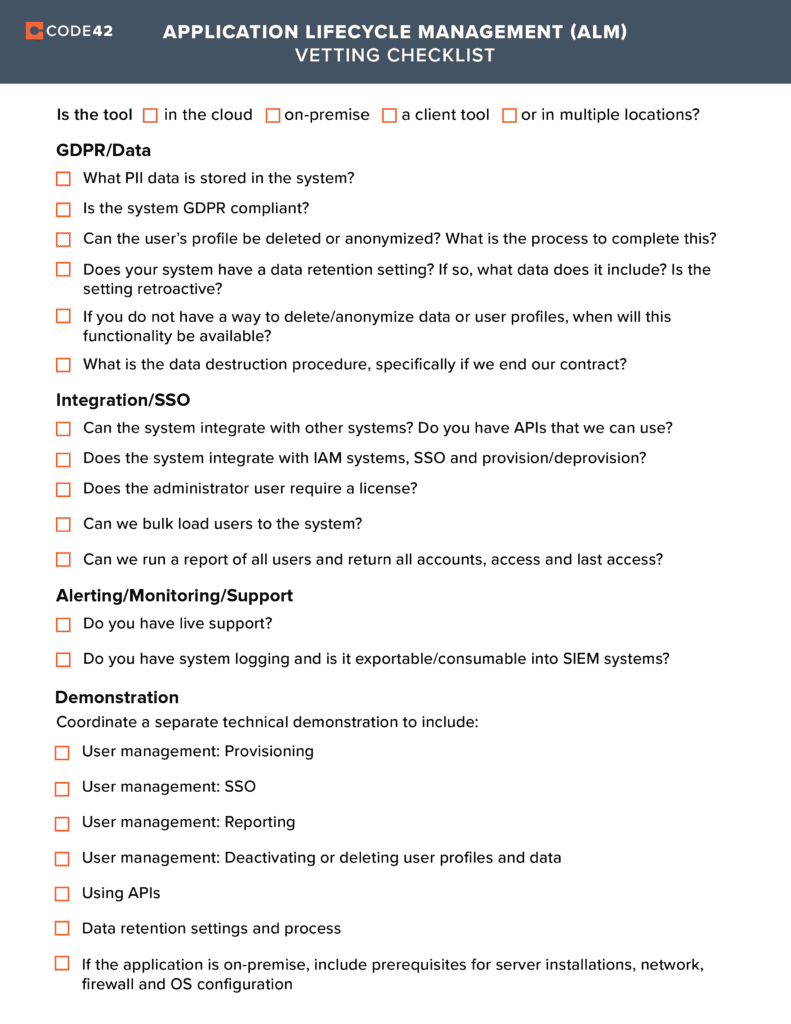It’s been a year since we — and many of you — went live with enhancements to our privacy and security programs tied to GDPR, and two years since we started the GDPR journey. That’s why it’s a great time to look back at the impact GDPR has had on the way we do business.
This post is purely for general information purposes and is not intended as legal advice. This blog gives a glimpse into Code42’s early GDPR implementation. We, along with GDPR as well as other national and international privacy rules, will continue to evolve and mature.
What we did to get ready for May 2018
We started preparing for GDPR around May 2017. The GDPR journey shouldn’t be a one-department initiative or the sole responsibility of Legal or Security. It must be a business-driven initiative with Legal and Security providing recommendations and guidance. At Code42, we established a cross-functional group comprised of Legal, Security, IT and system subject matter experts. The key activities of this group were to:
- Create an inventory of applications in scope for GDPR. We have European employees and customers so we had to look at applications that were both internal and customer-impacting. When outlining in-scope applications for GDPR, we kept in mind that more restrictive data privacy laws seem imminent in the U.S. We also conducted a cost-benefit analysis to determine whether we should keep non-EU PI in scope now or revisit it at a later date.
- Define retention periods for all of the applications in scope. Prior to our GDPR journey, we had a retention program in place, but it was largely focused on data we knew we had legal, regulatory or other compliance obligations around, including financial records, personnel files, customer archives and security logs. GDPR just gave us the nudge we needed to mature what we were already committed to and have better conversations around what other data we were storing and why.
- Figure out how to purge personal data from applications. This may be challenging for SaaS organizations. When applications are managed on premise, it’s much easier to delete the data when you no longer need it. But translating that to all your SaaS applications is another story. There are a few areas where SaaS applications are still maturing compared to their on-prem counterparts, and data deletion appears to be one of them. Delete (or anonymize) data, where you can. Otherwise, either add the applications to a risk register, requesting that the application owner do a risk accept and submit a feature request to the vendor, or look for a new vendor who can meet your retention requirements.
- Create an audit program to validate compliance with our security program. We are fortunate to have an awesome internal audit program that monitors effectiveness of our security program, among other IT and technology-related audit tasks. So it was logical to test our in-scope applications against our newly defined retention requirements. We review applications periodically.
- And lastly, but just as important, define a process for data subjects to request that their information be deleted outside of a standard retention schedule (aka “right to be forgotten”). It is important to remember that this is not an absolute. While we want to honor a data subject’s request as much as possible, there may be legitimate business cases where you may need to maintain some data. The key for us was defining what those legitimate business cases were so we could be as transparent as possible if and when we received a request.
What we’ve learned in the last year
So what have we learned about GDPR one year and two internal audits later? A lot.
What’s going well
1. A vendor playing nice
We had a really great success story early on with one vendor. When we dug into it, we found that our users were previously set up with the ability to use any email address (not just a Code42 email). We also learned our instance was configured to save PII that wasn’t a necessary business record. Based on that conversation, we were able to make a few configuration changes and actually take that application out of scope for GDPR!
2. A more robust application lifecycle program and greater insight into the actual cost of a tool
As a technology company that is continually innovating, we want to empower our users to use tools and technologies that excite them and increase productivity. At the same time, we want to ensure we are addressing security, privacy and general business requirements. Users often find tools that are “so cheap” in terms of the cost of user licenses. Our new Application Lifecycle Management (ALM) process, however, gives us a better sense of the actual cost of a new tool when we factor in:
- Onboarding requirements: Think Legal, Security, IT, Finance. Are there compliance requirements? Do we already have similar tools in place?
- Audit requirements: Will this be part of the GDPR data retention audit, user access audit or other application audit?
- Stand-up/stand-down requirements: Will it integrate with single sign-on solution? How does it integrate with other tools? How is data returned or destroyed?
- Support requirements: Who are users going to contact when they inevitably need help using the tool?
When the person making the request can see all of the added costs going into this “inexpensive” tool, it makes for easier discussions. Sometimes we’ve moved forward with new tooling. Other times we’ve gone back to existing tools to see if there are features we can take advantage of because the true “cost” of a new solution isn’t worth it.
3. A great start toward the next evolution of privacy laws
On the heels of GDPR, there has been a lot of chatter about the introduction of more robust state privacy laws and potentially a federal privacy law. While future regulations will certainly have their own nuances, position yourselves to comply with them in a way that will require just small tweaks versus major lifts like the GDPR effort.
What’s not working
1. What exactly IS personal data?
We have had a lot of conversations about what data was in scope… and I mean A LOT. According to the GDPR, personal data is defined as any information related to an identified or identifiable natural person. That puts just about every piece of data in scope. And while it may seem like an all-or-nothing approach may be easier, consider risks that could affect things like availability, productivity, retention, etc. when implementing controls, then scope programs appropriately to address those risks in a meaningful way.
2. “Yes, we are GDPR compliant!”
One thing we realized very quickly was that it wasn’t enough to simply ask our vendors if they were “GDPR compliant.” We ended up with a lot of “Yes!” answers that upon further investigation were definite “No’s.” Some lessons learned:
- Understand the specific requirements you have for vendors: Can they delete or anonymize data? Can they delete users?
- Whenever possible, schedule a call with your vendors to talk through your needs instead of filing tickets or emailing. We found it was much easier to get answers to our questions when we could talk with a technical representative.
- Ask for a demo so they can show you how they’ll delete or anonymize data and/or users.
- Don’t rely on a contractual statement that data will be deleted at the end of a contract term. Many tools still aren’t able to actually do this. It’s important that you know what risks you are carrying with each vendor.
- Audit your vendors to ensure they are doing what they said they would.
Would we do it all over again?
Actually, yes. While our GDPR project caused some grumbling and frustration at the beginning, it has now become an integrated part of how we operate. There is no panic and no annoyance. Instead, there are lots of great proactive conversations about data. At the end of the day, we have matured our tool management, and our privacy and security; and our data owners feel a stronger sense of data ownership.
Wanna see a sample of our Application Lifecycle Management (ALM) vetting checklist?

